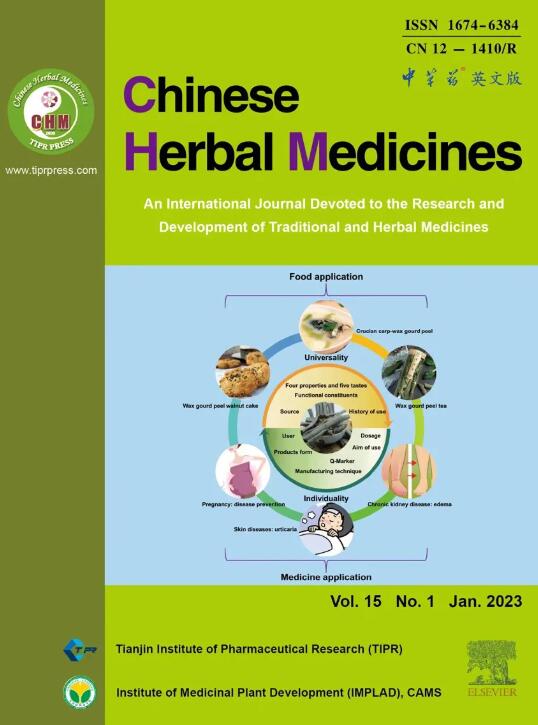Enhancement of apoptosis in HCT116 and HepG2 cells by Coix lacryma-jobi var. lacryma-jobi seed extract in combination with sorafenib
IF 4.7
4区 医学
Q1 CHEMISTRY, MEDICINAL
引用次数: 0
Abstract
Objective
Coix lacryma-jobi, a highly regarded Asian herb widely used in traditional Chinese medicine, is recognized for its dual benefits in promoting overall health and treating various diseases. While it exhibits moderate anticancer efficacy when used alone, this study investigated the enhanced anticancer potential of raw and cooked Coix lacryma-jobi var. lacryma-jobi (CL) seed extracts in combination with sorafenib against HCT116 and HepG2 cancer cell lines. The combination of sorafenib with other anticancer agents, including natural extracts, has garnered significant attention as a promising strategy for developing more effective cancer therapies.
Methods
Dry powders of raw (R) and cooked (C) CL seeds, obtained from a local commercial source in Thailand, were extracted and fractionated using ethanol (E), dichloromethane (D), ethyl acetate (A), and water (W) to produce eight fractions: CLRE, CLCE, CLRD, CLCD, CLRA, CLCA, CLRW, and CLCW. The coixol content in raw and cooked seed extracts was quantified and expressed as μg of coixol per gram of extract. The cytotoxic effects of these fractions were evaluated against HCT116 and HepG2 cells using the MTT assay. Fractions demonstrating the most significant cytotoxic responses were combined with sorafenib to evaluate their synergistic effects. Apoptosis induction and mitochondrial membrane potential (MMP) were assessed, and the underlying mechanism of apoptosis was explored by analyzing reactive oxygen species (ROS) generation and antioxidant protein expression levels. Additionally, the combination treatment’s effect on the phosphatidylinositol-3 kinase (PI3K)/protein kinase B (AKT)/mechanistic target of rapamycin (mTOR) pathway was investigated.
Results
One gram of CLCE and CLCD extracts contained higher coixol levels (7.02 μg and 9.69 μg, respectively) compared to CLRE and CLRD (2.66 μg and 5.96 μg, respectively). Coixol content in CLRA, CLRW, and CLCW fractions was undetectable under the study conditions. All extract fractions exhibited IC50 values exceeding 1 mg/mL after 24- and 48-hour incubations with HCT116 and HepG2 cells, indicating limited cytotoxicity when used independently. CLRD and CLCD fractions were selected for combination studies at a concentration of 1 mg/mL, combined with sub-IC50 concentrations of sorafenib to minimize its side effects. This combination significantly increased cytotoxicity, inducing apoptosis in HCT116 and HepG2 cells by elevating ROS levels and reducing the expression of superoxide dismutase 2 and catalase. Furthermore, the combination treatment downregulated the PI3K/AKT/mTOR pathway, indicating a targeted anticancer mechanism.
Conclusion
The combination of CLCD with sorafenib demonstrates significant potential as a strategy for future anticancer therapies. This CL seed extract, cultivated and commercially available in Thailand, shows promise as a natural supplement to enhance the efficacy of chemotherapy in upcoming clinical anticancer applications.
薏米籽提取物联合索拉非尼对HCT116和HepG2细胞凋亡的促进作用
目的泪草是一种备受推崇的亚洲中草药,具有促进全身健康和治疗多种疾病的双重功效。虽然单独使用时表现出中等的抗癌效果,但本研究研究了生的和熟的薏苡仁提取物与索拉非尼联合使用对HCT116和HepG2癌细胞的抗癌潜力。索拉非尼与其他抗癌药物(包括天然提取物)的联合使用,作为开发更有效的癌症治疗的有前途的策略,已经引起了极大的关注。方法采用泰国当地商业来源的CL种子原料(R)和熟种子(C)的干燥粉末,用乙醇(E)、二氯甲烷(D)、乙酸乙酯(a)和水(W)进行提取和分馏,得到CLRE、CLCE、CLRD、CLCD、CLRA、CLCA、CLRW和CLCW 8个馏分。定量测定了种子生、熟提取物中薏苡仁醇的含量,以每克提取物中薏苡仁醇的μg表示。使用MTT法评估这些组分对HCT116和HepG2细胞的细胞毒性作用。显示最显著的细胞毒性反应的组分与索拉非尼联合评估其协同作用。评估细胞凋亡诱导和线粒体膜电位(MMP),并通过分析活性氧(ROS)的产生和抗氧化蛋白的表达水平探讨细胞凋亡的潜在机制。此外,我们还研究了联合治疗对磷脂酰肌醇-3激酶(PI3K)/蛋白激酶B (AKT)/雷帕霉素(mTOR)通路的机制靶点的影响。结果CLCE和CLCD提取物的coixol含量分别为7.02 μg和9.69 μg,高于CLRE和CLRD(分别为2.66 μg和5.96 μg)。在本研究条件下,CLRA、CLRW和CLCW馏分中的Coixol含量均未检测到。与HCT116和HepG2细胞孵卵24小时和48小时后,所有提取物的IC50值均超过1 mg/mL,表明单独使用时细胞毒性有限。选择CLRD和CLCD组分进行联合研究,浓度为1mg /mL,与低于ic50浓度的索拉非尼联合使用,以尽量减少其副作用。该组合通过提高ROS水平和降低超氧化物歧化酶2和过氧化氢酶的表达,显著增加细胞毒性,诱导HCT116和HepG2细胞凋亡。此外,联合治疗下调了PI3K/AKT/mTOR通路,表明其具有靶向抗癌机制。结论CLCD联合索拉非尼在未来的抗癌治疗中具有重要的潜力。这种CL种子提取物,在泰国种植和商业化,显示出希望作为一种天然补充剂,以提高化疗的疗效,在即将到来的临床抗癌应用。
本文章由计算机程序翻译,如有差异,请以英文原文为准。
求助全文
约1分钟内获得全文
求助全文
来源期刊

Chinese Herbal Medicines
CHEMISTRY, MEDICINAL-
CiteScore
4.40
自引率
5.30%
发文量
629
审稿时长
10 weeks
期刊介绍:
Chinese Herbal Medicines is intended to disseminate the latest developments and research progress in traditional and herbal medical sciences to researchers, practitioners, academics and administrators worldwide in the field of traditional and herbal medicines. The journal's international coverage ensures that research and progress from all regions of the world are widely included.
CHM is a core journal of Chinese science and technology. The journal entered into the ESCI database in 2017, and then was included in PMC, Scopus and other important international search systems. In 2019, CHM was successfully selected for the “China Science and Technology Journal Excellence Action Plan” project, which has markedly improved its international influence and industry popularity. CHM obtained the first impact factor of 3.8 in Journal Citation Reports (JCR) in 2023.
 求助内容:
求助内容: 应助结果提醒方式:
应助结果提醒方式:


